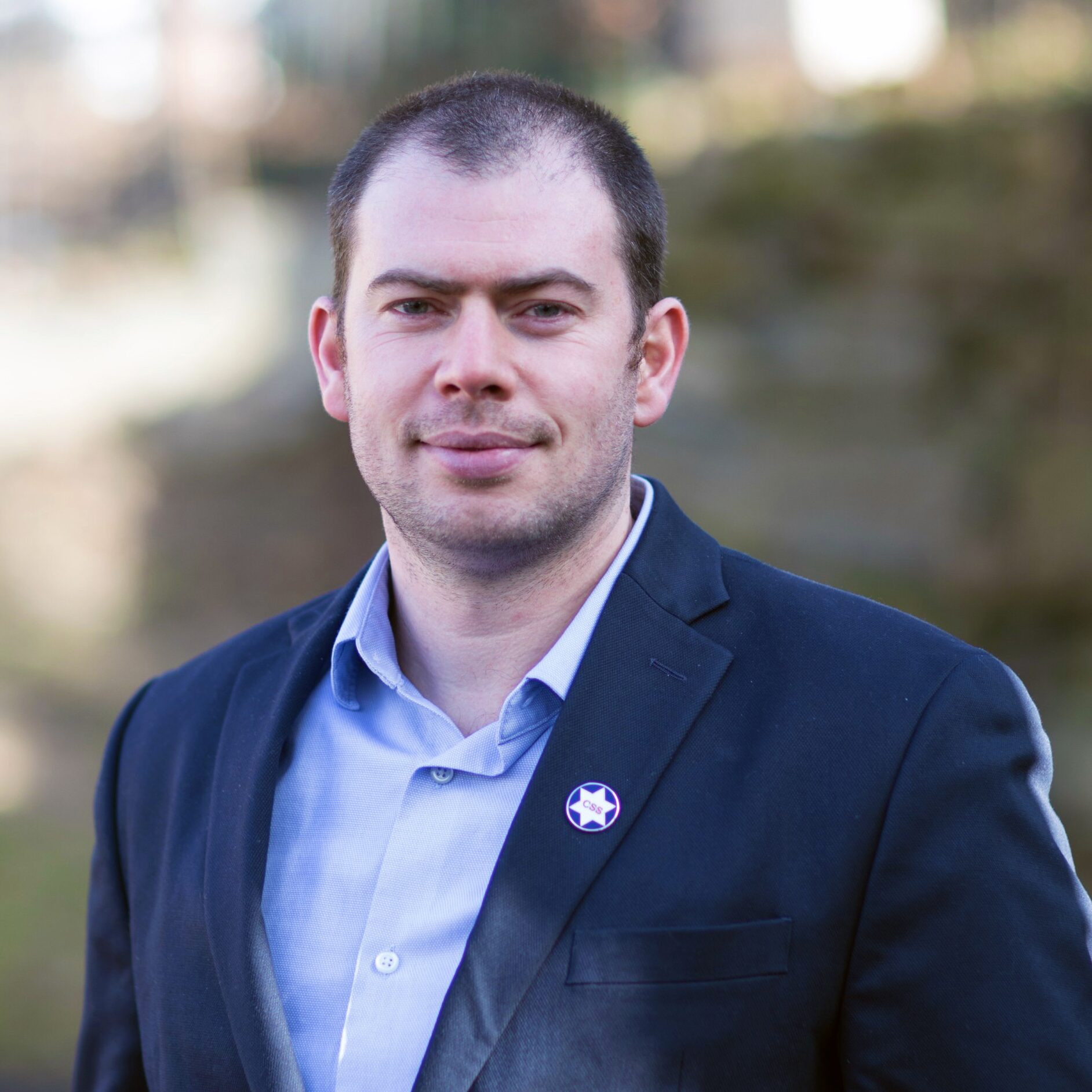june 2022

By Madeline Lauver, Assistant Editor
The Community Security Service, a nonprofit organization training Jewish communities in proactive security, helps prevent violence by promoting a security-minded culture in houses of worship.
All Hands on Deck: How Volunteer Security Prevents Violence


Image courtesy of the CSS

Richard Priem, Deputy National Director and Chief Operating Officer of the CSS. Image courtesy of Priem
After a series of high-profile attacks on the Jewish community in recent years, including the shooting at the Tree of Life Synagogue in Pittsburgh, Pennsylvania, he knew that a shift in the security culture of the U.S. could help prevent further violence.
Following a number of prominent security roles, including serving as a Counter-Terrorism Advisor for the United Nations Security Council, Priem took those observations about security culture and community engagement in safety and security with him to his role at the CSS, a national nonprofit organization that trains volunteer members of Jewish congregations to recognize and prevent the signs of violent acts and suspicious activity.
When Richard Priem, Deputy National Director and Chief Operating Officer of the Community Security Service (CSS), moved from the Netherlands to the United States, he noticed a difference between the countries’ security cultures.
Working in security in the Netherlands, Priem would often be approached by concerned residents who noticed a suspicious person or event. In the U.S., he observed fewer instances of community members reporting suspicious activity to security professionals.
advertisement
advertisement
The nonprofit trains community members both virtually and in-person on how to recognize and mitigate potential security threats. With the volunteers’ unique knowledge of their communities, the CSS can provide security training that helps community members respond quickly to signs of violence and develop a sound security strategy in their houses of worship and for community events.
In addition to emergency response training, which includes elements of active shooter preparedness, the CSS stresses the importance of a layered security strategy in its volunteer training. Alongside physical security, technology and perimeter security, institutions need emergency plans to ensure the safety of their community. “I think what’s most important is that you need people,” Priem says. A facility can install video surveillance technology, for example, but that measure is only effective when people watch the footage to detect threats. Or, “if you have a very strong reinforced door, but people keep it open because they want fresh air to come in, you need to remind them what it was meant to do,” he adds.
Protecting houses of worship and community events presents complicated issues, according to Priem. “I think that there’s an inherent challenge to houses of worship, being they want to be open and inclusive, but in an increasingly polarized society, with extremism festering online in dark places of the web, they are also targets.”
Securing Jewish religious institutions comes with unique challenges as well, as years of conspiracy theories and hate targeting the community have built a complex threat landscape. “The Jewish community faces a particular threat because of the myriad of actors that historically perpetrated acts on the Jewish community,” Priem says. Over half of all religion-based hate crimes in the United States target the Jewish community, according to ADL and FBI statistics.
The ultimate balance between keeping your congregation safe and keeping it inviting and open and inclusive for all: that’s a challenge that cuts across denominations and religions.


Another challenge securing religious institutions is that synagogues and other Jewish community spaces aim to remain open places of gathering and worship. “The ultimate balance between keeping your congregation safe and keeping it inviting and open and inclusive for all: that’s a challenge that cuts across denominations and religions,” Priem notes.
The CSS answers this challenge by engaging directly with individual congregations and promoting a security-minded culture in their institutions. In previous deadly attacks, Priem says how easy it was for malicious actors to enter Jewish spaces. “In Pittsburgh, Poway, Jersey City and Monsey, the perpetrators could just walk right into the building. There’s nobody stopping them, no access control. And I think there are very simple ways to help stop anyone seeking to do harm from becoming an active threat,” he says.
That’s where the CSS’s volunteer security model shines. The decision to work with individual congregations was integral to the success of the model. Priem says “there are certain unique values [of working with specific institutions], as people are tied to the institution, they know their institution, they’re committed to it. And our training is geared towards giving them the tools and empowerment to help protect their community spaces.”
With the volunteer security model, security personnel work proactively to secure community spaces because of the unique dedication of community members in a security-minded culture. By training members of Jewish congregations to take security into their own hands, the CSS aims to make security a unified effort. “The best incidents are those that do not happen,” Priem says. “Our goal, together with our partners, is to get every Jewish institution in the U.S. to the same level of security awareness that communities abroad have.” Activating community members to see something and say something can help identify a threat before an incident, according to Priem.
The volunteer security model isn’t specific to the Jewish community or even other faith institutions. “I definitely think that it is a concept that can be employed by private sector security leaders,” Priem says, noting that many aspects of security programs already involve community members. For example, on social media networks, sites often allow users to report suspicious activity. Companies with cybersecurity and phishing awareness training rely on employees to detect and prevent cyberattacks from occurring, and organizations that conduct emergency drills, such as schools and government buildings, can use the experiences of their community members to further hone their disaster preparedness.
“I think training volunteers to help when the mission is something that is dear to their heart, such as security, is a huge force amplifier,” Priem says. “To really have a sense of security, it needs to be collective security. It needs to be owned by the community. The more people who have that security awareness, the better.”



